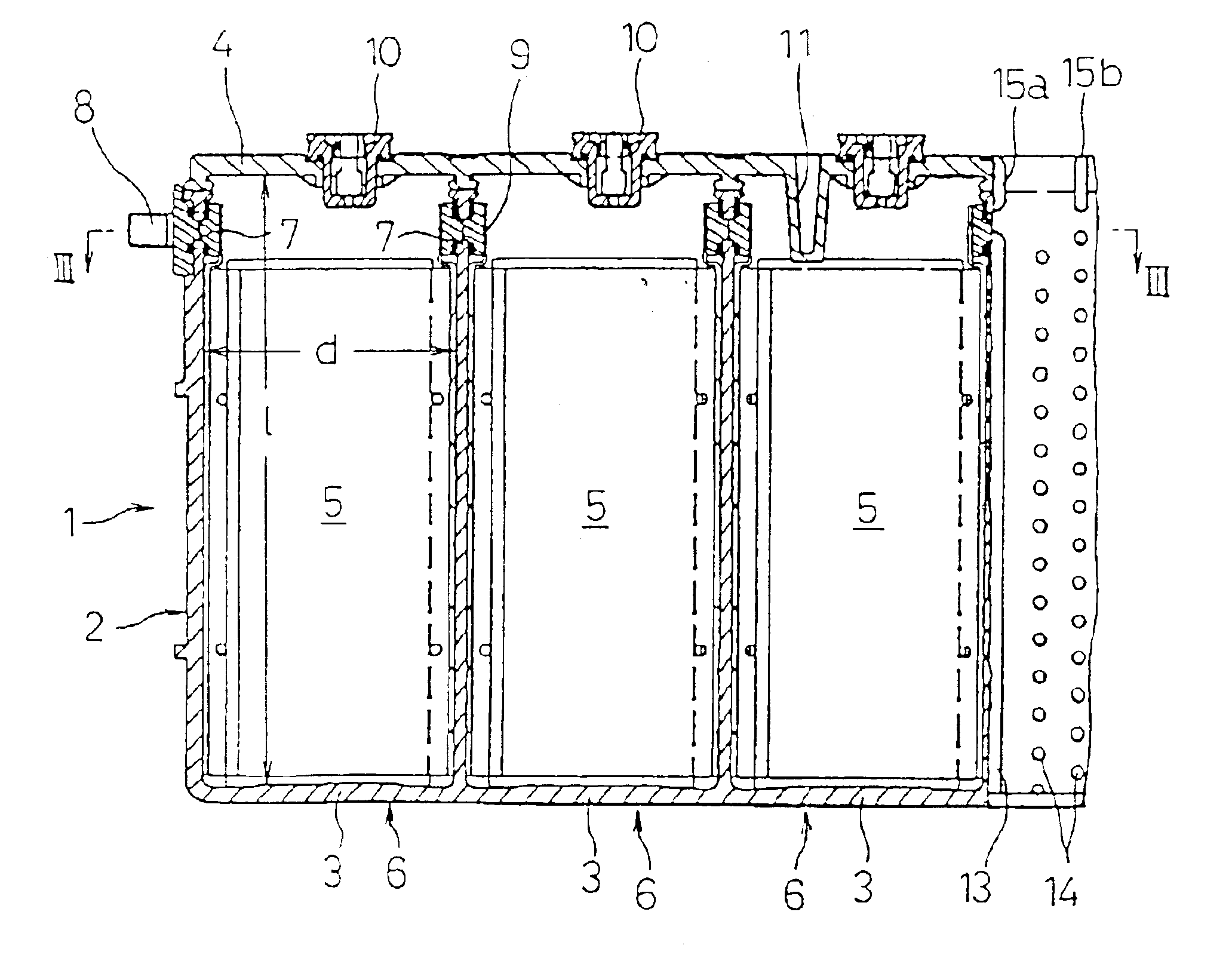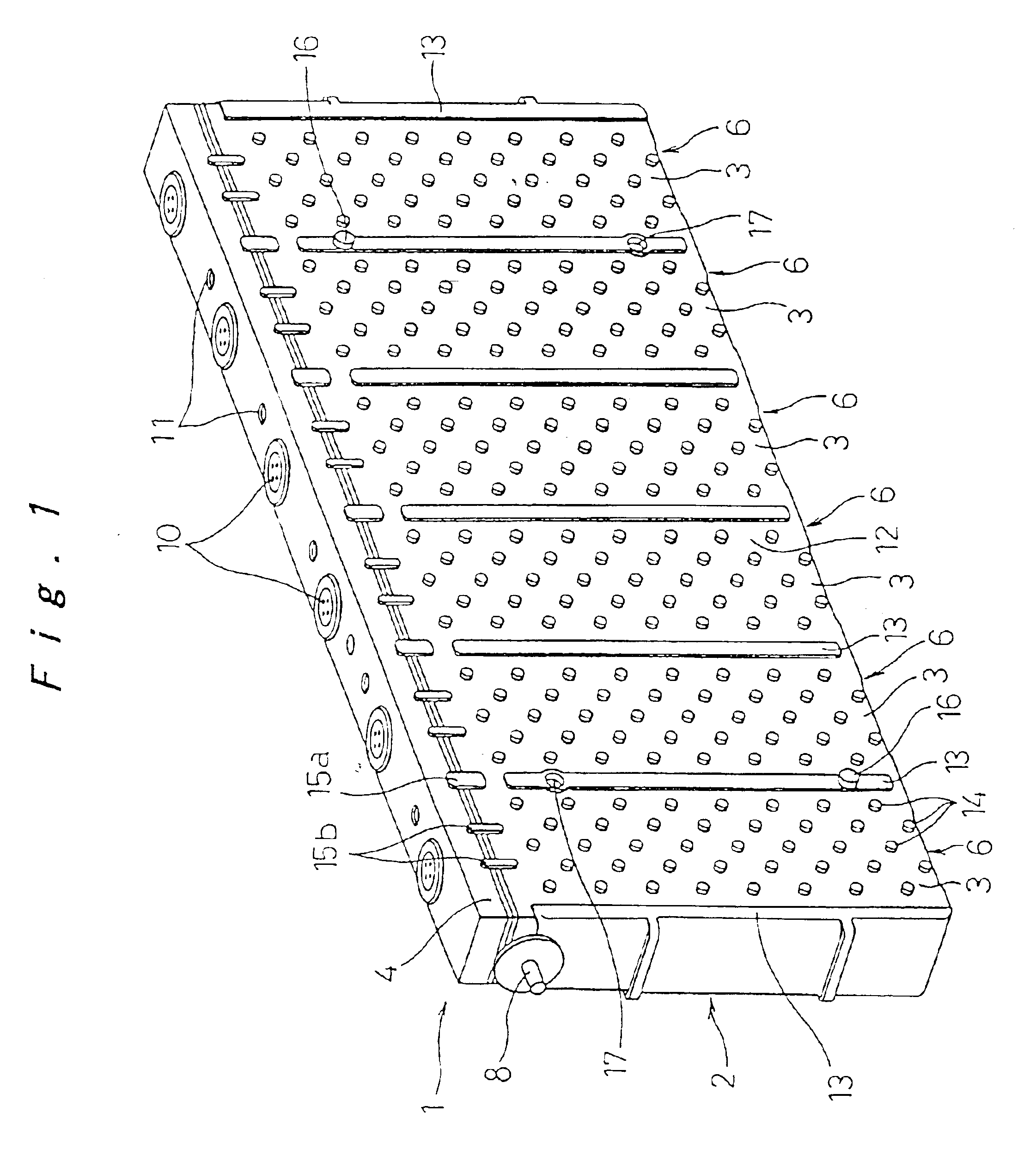Battery module, and rechargeable battery for constituting the battery module
a battery module and rechargeable battery technology, applied in the field of batteries, can solve the problems of large internal resistance of batteries, low power output, and inability to compact the space for installing batteries
- Summary
- Abstract
- Description
- Claims
- Application Information
AI Technical Summary
Benefits of technology
Problems solved by technology
Method used
Image
Examples
Embodiment Construction
Preferred embodiments of a battery module according to the present invention will be hereinafter described with reference to FIGS. 1 to 8.
The battery module of this embodiment is a nickel metal hydride battery, which is suitable for use as a drive power source for an electric vehicle. As shown in FIGS. 1 to 3, the battery module 1 is made up of a plurality of (six in the example shown in the drawing) cells 6, arranged in a row. Cell cases 3 of each of the cells 6, which are formed in a prismatic fashion with short lateral walls, long lateral walls, and open top ends, are mutually integrated on their short lateral walls, thereby constituting an integral battery case 2. The upper open ends of the cell cases 3 are closed all together by an integral lid member 4.
Each of the battery cases 3 constitutes a cell 6, accommodating therein electrode plate groups 5 together with electrolyte. An electrode plate group 5 comprises a large number of positive electrode plates and negative electrode ...
PUM
| Property | Measurement | Unit |
|---|---|---|
| resistance | aaaaa | aaaaa |
| power | aaaaa | aaaaa |
| electromotive force | aaaaa | aaaaa |
Abstract
Description
Claims
Application Information
 Login to View More
Login to View More - R&D
- Intellectual Property
- Life Sciences
- Materials
- Tech Scout
- Unparalleled Data Quality
- Higher Quality Content
- 60% Fewer Hallucinations
Browse by: Latest US Patents, China's latest patents, Technical Efficacy Thesaurus, Application Domain, Technology Topic, Popular Technical Reports.
© 2025 PatSnap. All rights reserved.Legal|Privacy policy|Modern Slavery Act Transparency Statement|Sitemap|About US| Contact US: help@patsnap.com



